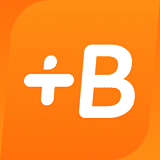A Brief History of CALL
Computer Assisted
Language Learning (CALL) is the general term for the range of processes
and activities that employ computers in the teaching and learning of a
new langauge.
In the history of CALL we can see the confluence of
the latest technology as well as the most widely accepted language
theories of the day.
The history of CALL is often divided into three phases:
- Structural CALL
- Communicative CALL
- Integrative CALL
Starting in the ’50s and developing through the ’70s, we have what’s called
Structural/Behaviorist CALL by Warschauer.
This marked the era of Stimulus and Response. The computer prompts the
student with a question (stimulus) and the student gives an answer
(response) by filling in the blanks or choosing from a given set of
choices.
The methods
du jour were the
Grammar-Translation and
Audiolingual
methods. Language was seen as made up of discrete units, and these
units were considered to be closely interconnected and interacting
according to a predictable and explainable set of rules (grammar).
Teachers taught the different rules of grammar and repetitively drilled
their classes on different ways the rules can be correctly applied.
Computers
at this stage were mainly utilized as devices that could present
stimuli repetitively in exactly the same manner without ever getting
tired. An example of this are the “listen-and-repeat” programs running
in language labs at that time.
In the ’80s and ’90s came
Communicative CALL. The Communicative Approach
to language teaching came into being as a reaction to the
Grammar-Translation and Audiolingual methods. This time, instead of
teaching the language—its rules, syntax, phonemes and morphemes—teachers
found ways to provide opportunities for students to actually use the
language. They gave students tasks that can only be completed by using language. Communication and interaction were important.
And
because such technology always comes in service of the language
paradigm of the day, computers were used to reflect these ideas.
Language drills were increasingly placed in the context of a
communicative task—like programs that feature some cartoon character
where students help him find his way home. Computer programs were
designed to gauge comprehension with drills like paced reading and
sentence reconstruction.
And developments in computer technology
didn’t just affect the “testing” part of CALL. It really made teaching
language more vivid. For example, the continued development in computer
capabilities has resulted into crisper audio and video. So in addition
to the drill formats, students can learn by watching videos of how
native speakers actually interact. They can see how language is used in
different situations, like in meeting a new person or asking for
directions. Computers have given language learners a more vivid idea of
what language is beyond the subject-verb agreements and the endless list
of vocabulary words to be memorized.
The next phase of CALL is the
Integrative Phase
(which has reigned from 2000 onwards). First came the drills of the
structural approach, then followed the skills in the communicative
approach. Critics of the second phase say that the skills taught may be
limited to the number and types of situations that may be presented to
students. (We are not asking for directions or ordering food at the
restaurant the whole time.)
There needs to be an integration of
the (general language) knowledge presented in the first phase as well as
the communicative skills of the second phase. So we have the
integrative phase which blended the virtues of the previous decades into
a technology that, for its part, has found its stride.
The
development of the internet and hypermedia that can integrate, video and
audio streaming, graphic-interactive content and virtual worlds, have
redefined how learning is done. With today’s technology, you can develop
speaking, listening, reading and writing skills concurrently and in the
comfort of one’s private space and schedule.

The perfect example of this Integrative CALL is FleuntU
with its interactive videos. You have a slew of different types of
video content involving different types of topics, themes and situations
(Phase 2). You have an interactive transcription where when you scroll
over any word, out pops its own dictionary entry that explains various
usage and rules of grammar and syntax for that specific word (Phase 1).
With technologies like FluentU, you get the best of both worlds.
And that, briefly, is how CALL has developed over the years.
What
technology can do to redefine the concepts of teaching and learning
language will be up for grabs for the next game changer.
Advantages: The 2 I’s of CALL
Individualized
One
of the advantages of CALL, in its present form, is the ability to cater
to individual differences. Differences in learning styles, language
skills desired, pacing and learning schedules can be easily
accommodated.
It used to be that computer programs deliver a
one-size-fits-all, cookie cutter material that can only be accessed
after signing your university’s computer lab log book. Today, learning a
language has not only been democratized, it has been individualized.

For example, you create a free account in any of the major language learning sites like Busuu and Babble and
you start your own learning journey without interference from others.
There are no classmates, no group lectures and no chorus of students
repeating after teacher.
You decide how much time you want to put
in and when you want to access it. There’s no calendar for classes where
you’ll be marked absent when you don’t show up.

You
can access the materials anytime and anywhere you want. Actually, one
way of looking at the history of CALL is by noticing how technology has
individualized language learning. The university’s mainframes and
language labs used to have a monopoly on some clunky software. Then came
the PC in the 90s and were computers found a home in practically every
home. Today, with mobile technology, language learning can be had on the
go, while sitting on the bus, while waiting in line at the Apple store
or even while taking a shower.
Interactive
CALL has come
so far along that it can virtually replace an actual teacher asking the
class, “So, what do you guys think? What do you want to do next?”

Well, not all teachers want input from their students. The advantage computers have is that they
do
need an input in order to run. That means they’re inherently
interactive. Over the decades, the complexity of this interaction has
been increasing. From the simple stimulus-response in early computers
where students are practically passive learners, we now have CALL
actually “learning” and “remembering” student preferences. From a simple
text presentation, we now have gamified graphics like Mindsnacks.
The
individualized nature of CALL has led to the second “I.” Interactive
means that when you click on something, the computer responds. There’s
enough flexibility built into the technology so
that what happens in the lesson is largely up to you. Do you want to
take it in this or that direction? Not only can the students choose
which topics to study, skip or which ones to tackle first, they can
click also forward and backward, and the computer obliges their
commands.
The interactive nature of today’s CALL ensures that
learning is always a two-way street. Students do have a say in what they
want to learn. CALL is dynamic, not static. Robust not rigid.
How Is CALL Used?
To Teach
CALL
applications can be used by teachers as technology partners in running
their classrooms from the initial intro of language concepts to the
giving of electronic homework. Students are using computers in
practically every other aspect of their lives anyway, from locating the
nearest coffee shop to shopping for new shoes. So why not throw learning
a new language to the mix?
CALL, in addition to integrating
technology in the learning process, also helps solve classic teacher
problems like capturing student attention, maintaining student interest,
holding focus and increasing engagement. Teachers can benefit from the
great variety of interactive activities, games, songs and stories that
make language learning not only painless but also fun.

Applications like the award-winning Language Nut
was developed for this very purpose and looks to be a complete solution
and curriculum partner for language teachers. (It was developed, after
all, by former language teachers.) It supports four language
skills—listening, reading, writing, speaking—and has an immersive
interface that’s easily addictive. In the world of Language Nut, you sing songs, play games, listen to stories and remember vocabulary all the way to fluency.
To Reinforce
CALL
can also be used to reinforce a teacher’s classroom lessons and
activities. When educators need help in making lessons more vivid and
when they need the concepts to come alive, instead of pasting cut-outs
and visual aids on the board they can make use of multimedia lessons
offered in CALL.
FluentU is one example of CALL that can be used in every phase of teaching
language. Its concerts, interviews and music video clips, for instance,
can scaffold linguistic discussions given by the teacher, providing a
different look and a new approach to the lesson. They put new language
in context and breathe life into it. Multimedia content can effectively
substantiate topical lessons, from greetings and introductions to
talking about the weather, food and even sports.
But CALL doesn’t
only give students a clear line of sight (and sound) on what the teacher
is talking about. It has capabilities beyond what any human can do. FluentU has
interactive transcripts, which means practically everything you need to
know about a specific word—like definitions, in-context usage and
pronunciation—pops out the moment you roll the cursor over said word.
The
learn mode of this program employs SRS to introduce
and reinforce new vocabulary, grammar patterns, expressions and even
full sentences, and incorporates video clips into its flashcards and
dynamic learning games.
CALL doesn’t have the physical limitations
that cap humans. That’s why it can bridge the gap when human endurance
and consistency need a boost. For example, a teacher can only repeat the
lessons so many times. But repetition is key if no child in class is to
be left behind. CALL apps, videos and programs can be run and rerun as
many times as necessary, without fatigue and diminishing returns, and
irrespective of geography or time. That means students can review and
study the lessons long after the teacher has gone home and sound asleep.
To Test
There
will probably never be a substitute for a teacher or a native speaker
to determine whether a student has actually become fluent with the
language, but CALL has become very good at assessing competency with
subsets of a language. For example, it can easily determine if a student
has mastered specific topics, like grammar and vocabulary.
But
beyond simple testing really, CALL has been able to integrate both
teaching and testing in a single stroke of a mouse. With programs like Duolingo, Memrise and Brainscape,
there’s very little time gap between teaching and testing, or rather,
very little difference between teaching and testing at all.
For example, in a simple translation exercise, the French word for smile (
sourire)
might be presented in a slide or flashcard with pics and an audio feed.
With a simple click of the “next” button, a user might immediately be
shown a slide that testing “What is French for smile?” This encourages
the learner to recognize the word and produce the word in different
contexts.
CALL is free of subjective biases and can faithfully
follow a predetermined set of algorithms. That is, if a user shows
mastery over certain topics or words then the program proceeds to other
more difficult material. If they don’t have this knowledge ingrained
yet, then it repeats the material until it has determined that the user
has exhibited sufficient knowledge of the subject. In a way, the program
tells the student, “Hey, you haven’t really learned this word yet, so
I’m going to present it a couple more times so you can have it saved in
your long-term memory.”
To Practice
CALL can be used even
when classes are out and in the teacher’s absence. Language learning
technology in its present form is student-initiated and
student-centered, giving all the time and all the room in the world for
students to practice. Language practice can be had in the privacy of
one’s room and at a moment’s notice. And the kicker is that students get
to do all this without fear of being negatively judged by others.
And of course, CALL practice is equal parts learning and fun as exemplified by Mindsnacks—a
gamified approach to language learning. For example, it has a game
called Dam Builder where you shift wooden logs around so that, in the
end, you’re able to pair corresponding words/phrases.
But probably
one of the most important contribution technology has to language
learning is that it has given learners access to the native speakers.
Technologies like Italki and Skype
took language learners from hammering at the language alone, to working
with native speakers, tutors or teachers sitting in their own rooms
half a world away. In the past, this kind of practice could only be had
by flying across oceans.
CALL makes everything that much
easier. From the teaching, reinforcing, testing and practicing, CALL
presents itself as a capable and consistent partner to both teacher and
student. It changed the way languages are being tamed.
But for all its virtues, there’s one thing that will always remain in the human province. Motivation.
The zeal to learn a new language will always be alien to technology.
Technology can’t manufacture drive out of thin air, for it’s fashioned
into the inner recesses of the human spirit.
It takes a teacher
like you to kindle such fire. It takes someone like you to spark wonder
into the minds of your wards. And that’s why, for all CALL’s awesome
potential, the greatest teacher of all, and for all time, will always
be…a teacher.
Learn how to use these CALL options and get your students on the path to success!
source: https://www.fluentu.com/blog/educator/what-is-computer-assisted-language-learning/




